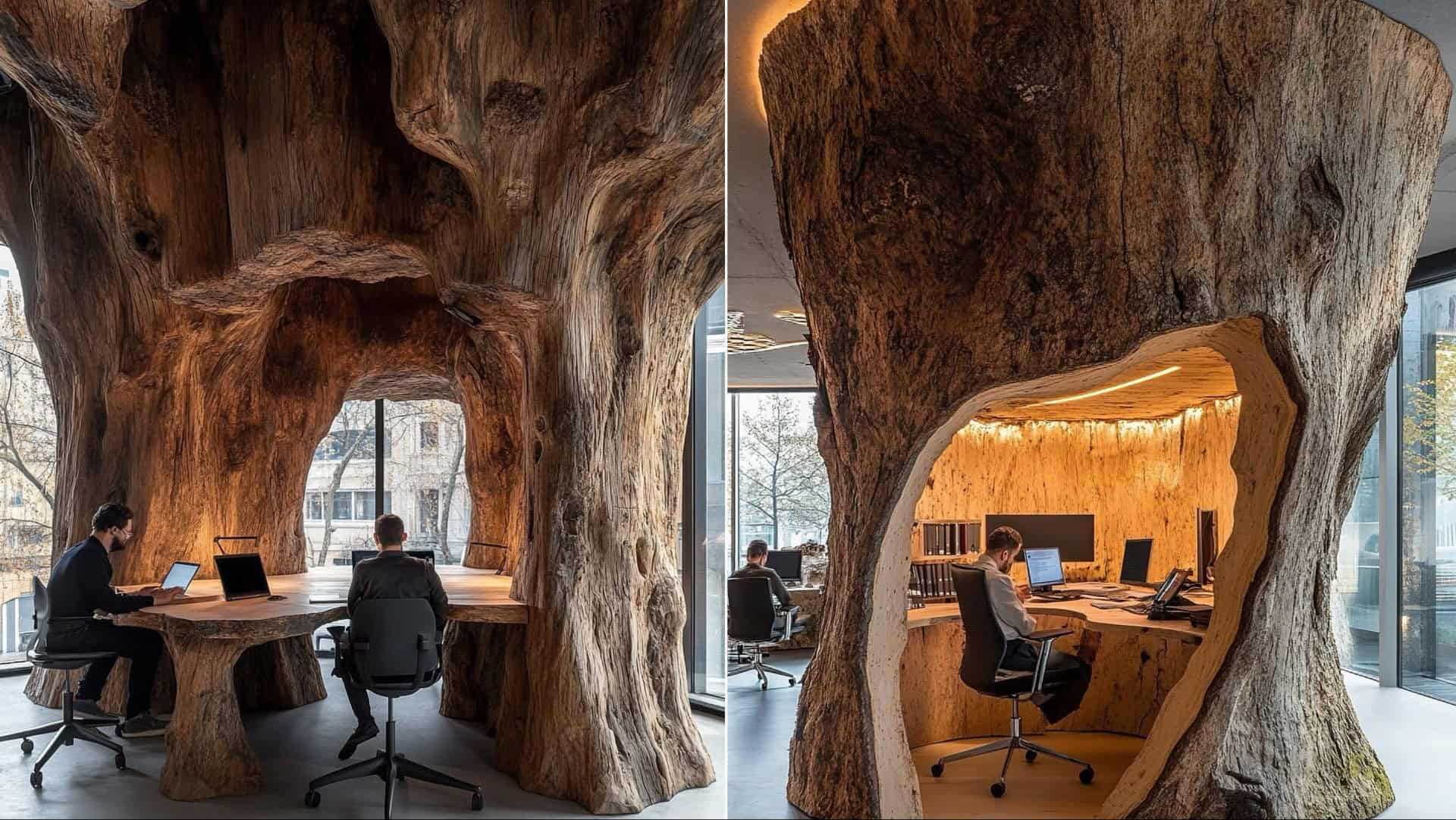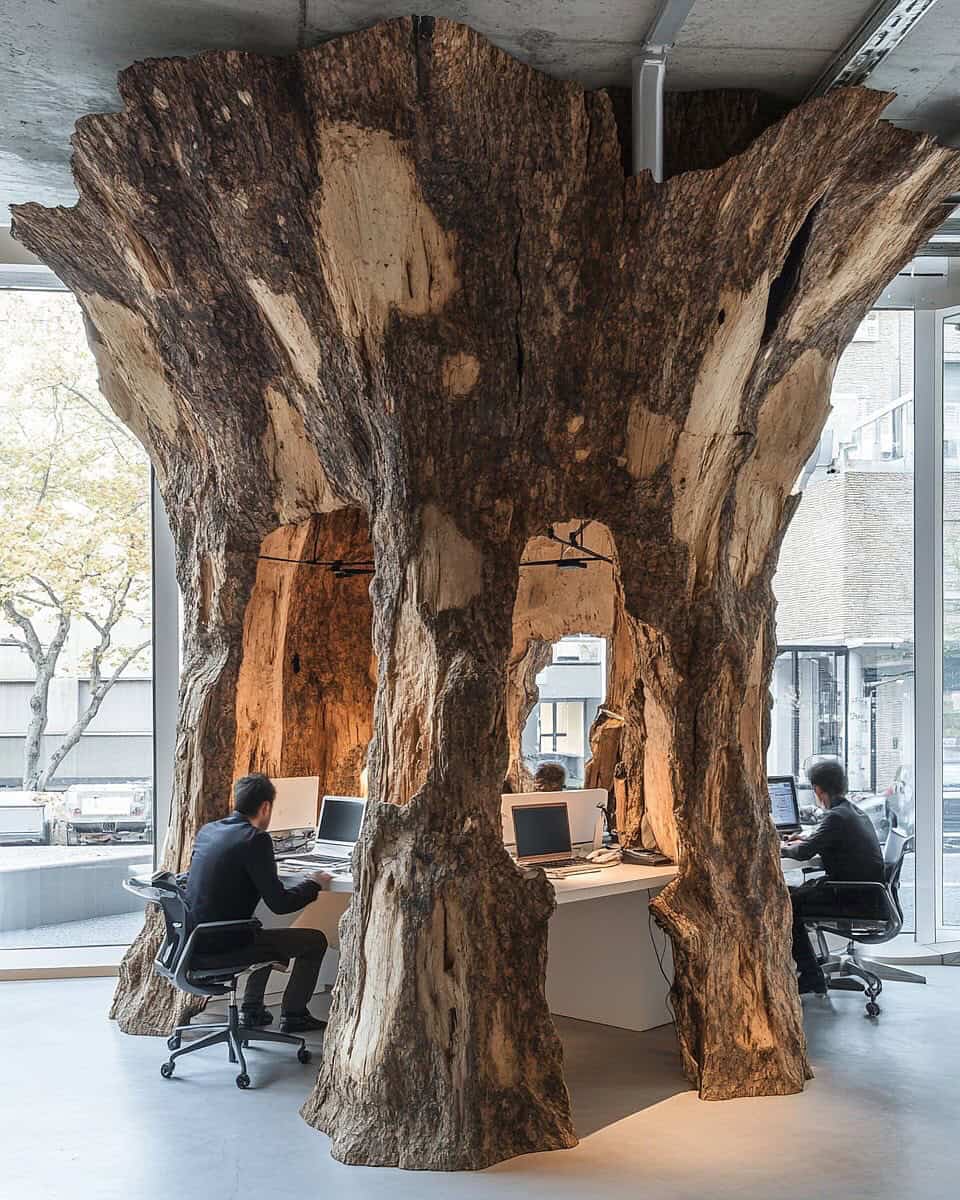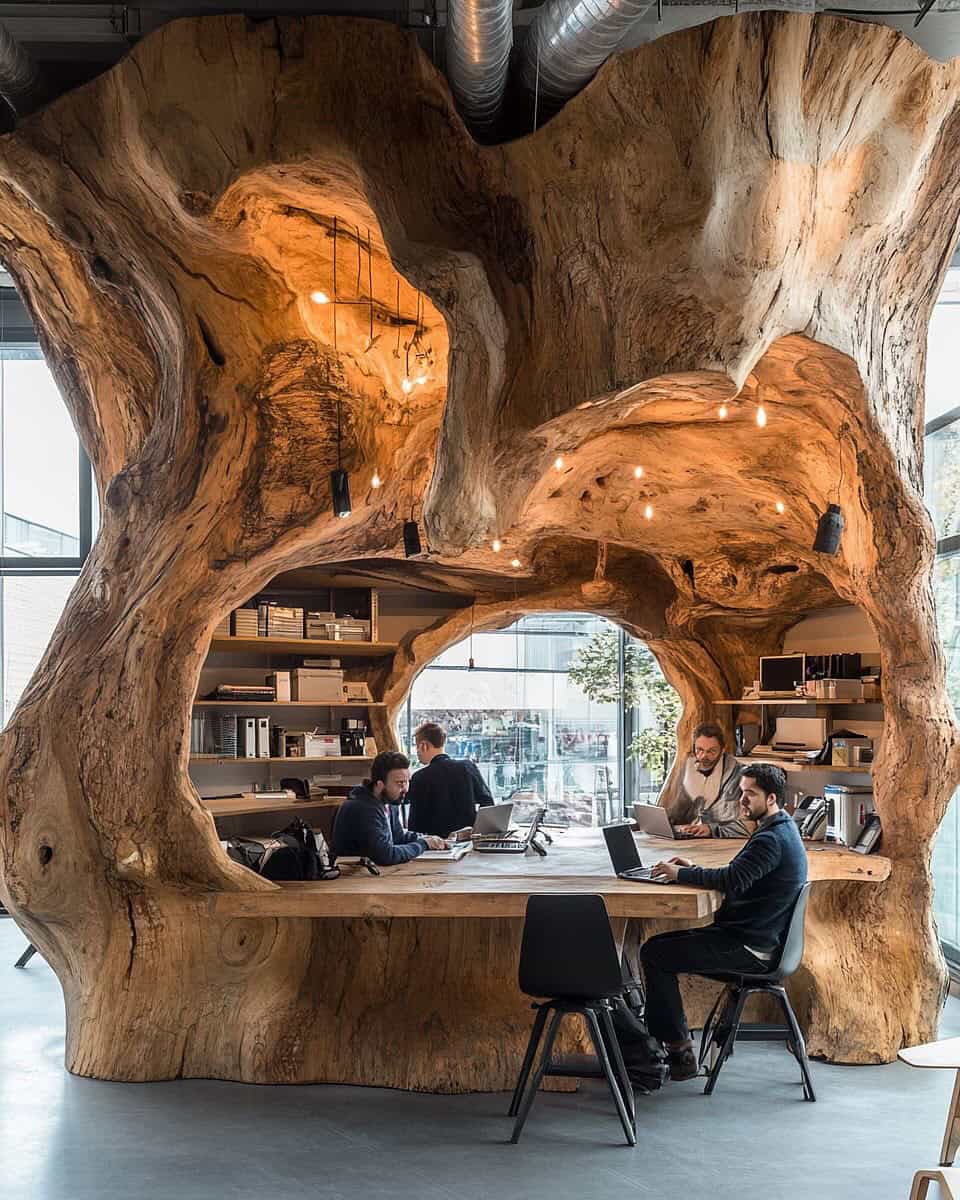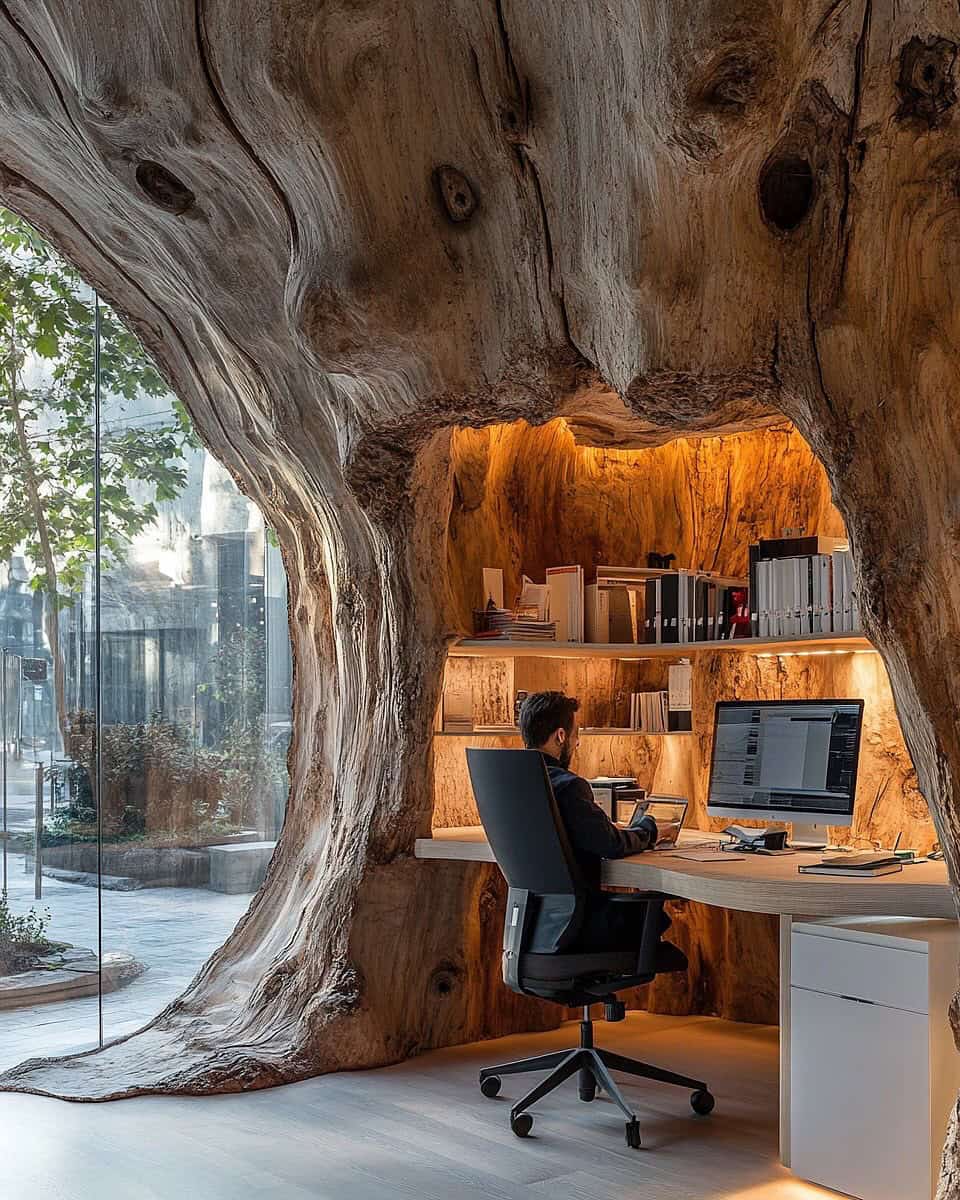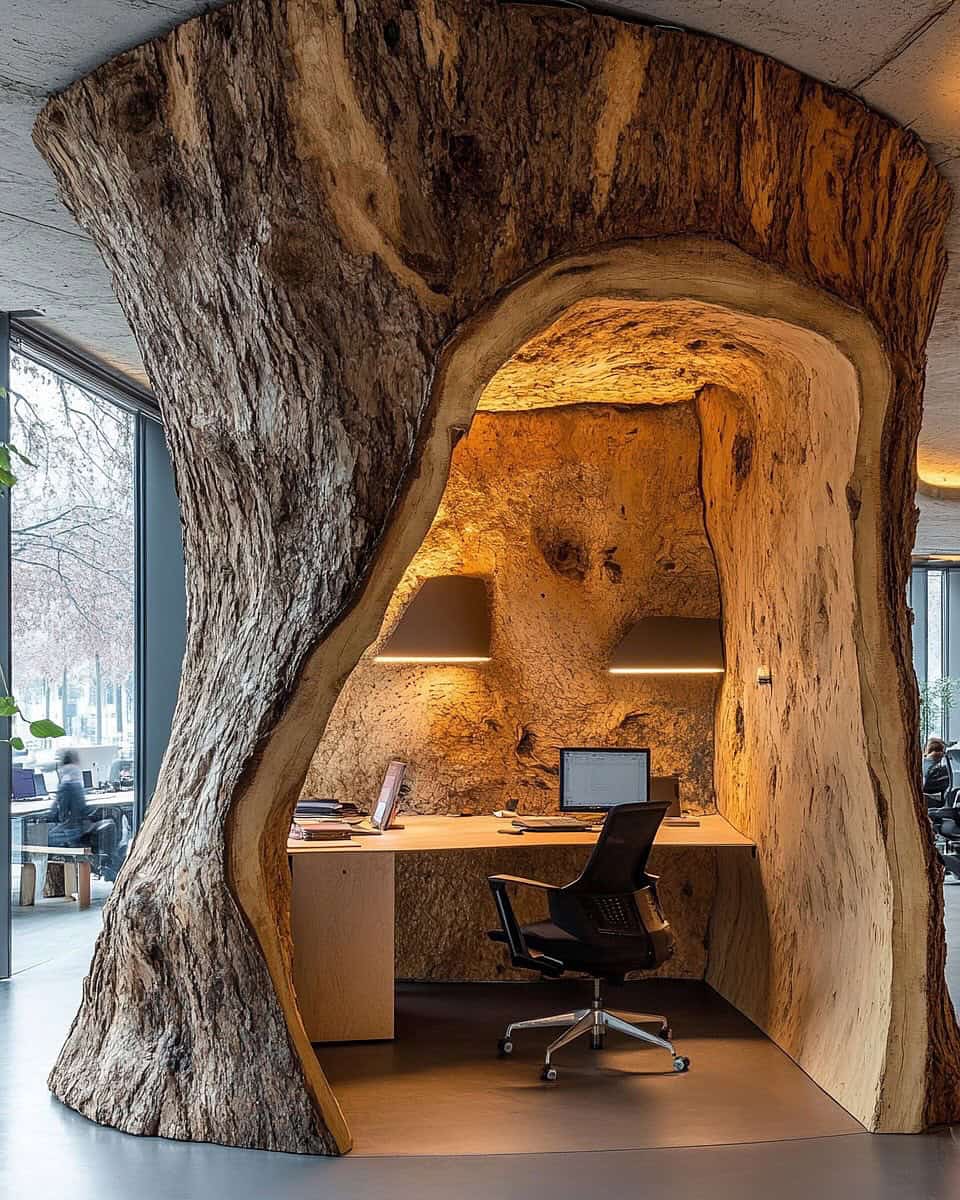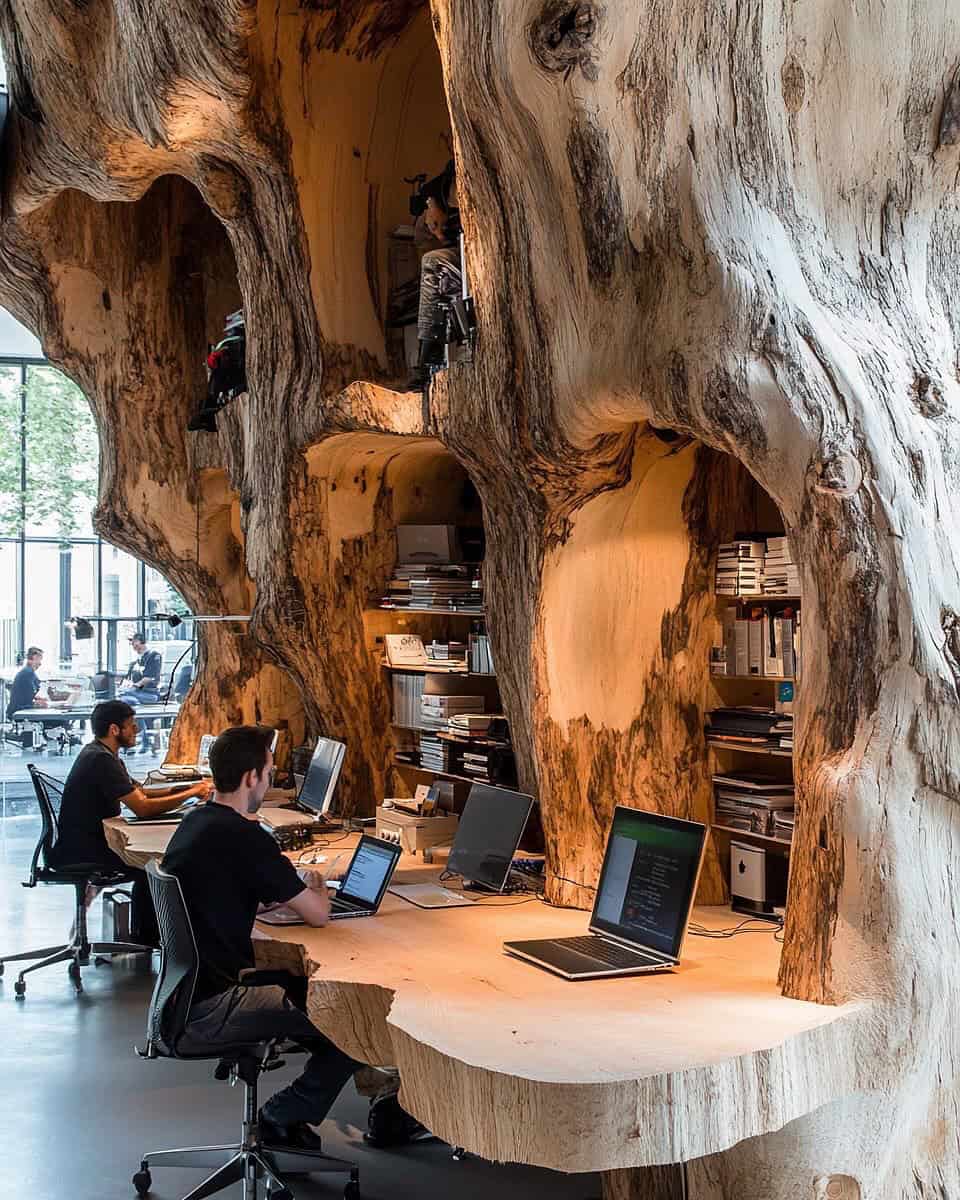AI artist Shail Patel created a contemporary office with tree trunks instead of cubicles, offering privacy and dedicated workspace.
This design includes help desks, office storage, and canteen tables styled with natural elements. It juxtaposes organic and sterile modern environments.
With biophilic design trending in 2025, we explore what it may suggest about work-life balance.
How come we’ve chosen to mask our offices into spaces of nature, rather than devoting some time to actually spend outside?
1. Tree-Trunk Workspaces
Imagine entering an office where tree trunks serve as workspaces. Employees find themselves enveloped by nature, reducing stress and boosting creativity.
This organic setup contrasts sharply with standard cubicles. Picture the serenity of a forest amidst the bustling work environment.
However, one wonders if this immersive experience could become overwhelming for some.
2. Nature-Inspired Meeting Rooms
Meeting rooms adorned with green walls and wooden furniture create a calming ambiance.
These spaces foster collaboration and innovation, with the natural environment encouraging open communication.
Yet, such intense proximity to nature might distract from focused discussions. Balancing design and functionality is crucial for effective meetings.
3. Biophilic Break Areas
Break areas featuring indoor plants and hammocks offer a refreshing escape. Employees unwind in a nature-like setting, recharging for tasks ahead.
The soft lighting and greenery invoke relaxation. Yet, the question arises whether such setups might entice longer breaks, impacting productivity.
A harmonious balance is essential.
4. Green Canteen Spaces
Canteens adorned with vertical gardens and wooden tables provide a unique dining experience. The natural elements create a soothing atmosphere for lunch breaks.
However, the blend of nature with dining might lead to cleanliness challenges.
Maintaining hygiene without compromising biophilic aesthetics becomes a priority.
5. Natural Light Integration
A workspace flooded with natural light invigorates employees. Large windows and abundant greenery create a vibrant atmosphere.
Yet, glare and temperature control pose challenges. While sunlight boosts mood, it requires careful management to avoid discomfort.
Achieving equilibrium between natural elements and practical needs is pivotal.
6. Eco-Friendly Materials
Incorporating eco-friendly materials like bamboo and reclaimed wood demonstrates commitment to sustainability.
These materials minimize environmental impact while providing aesthetic appeal. However, sourcing sustainably can be costly and complex.
The balance between eco-consciousness, cutting trees and budget constraints must be navigated carefully.
7. Sensory Experience Design
Designing spaces with water features and aromatic plants captivates the senses. Textured walls add depth and engagement.
These sensory elements enhance employee well-being, fostering creativity and reducing stress.
However, the complexity and cost of maintaining such intricate designs may outweigh benefits for some organizations.
8. Open-Concept Natural Workspaces
Open-concept workspaces with natural dividers promote interaction and flexibility. Plants and collaborative areas enhance creativity.
Yet, privacy concerns arise in such environments, potentially affecting concentration.
Balancing open design with privacy needs is essential for a functional workspace.
9. Acoustic Panels from Nature
Acoustic panels crafted from natural fibers reduce noise, enhancing focus. These panels blend seamlessly with organic design, offering aesthetic and functional benefits.
While they provide tranquility, their effectiveness varies based on placement and material.
Evaluating the impact on the work environment is crucial for success.
10. Adaptive Biophilic Technology
Adaptive technology integrates with biophilic design through smart lighting and temperature controls.
These features adjust to environmental changes, ensuring comfort. Natural elements complement high-tech solutions, creating a harmonious workspace.
Yet, the reliance on technology raises questions about sustainability and potential overdependence.

